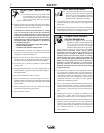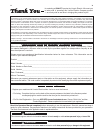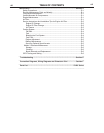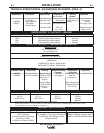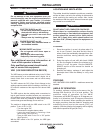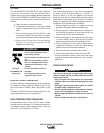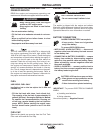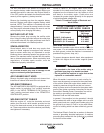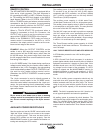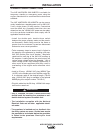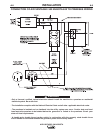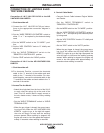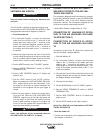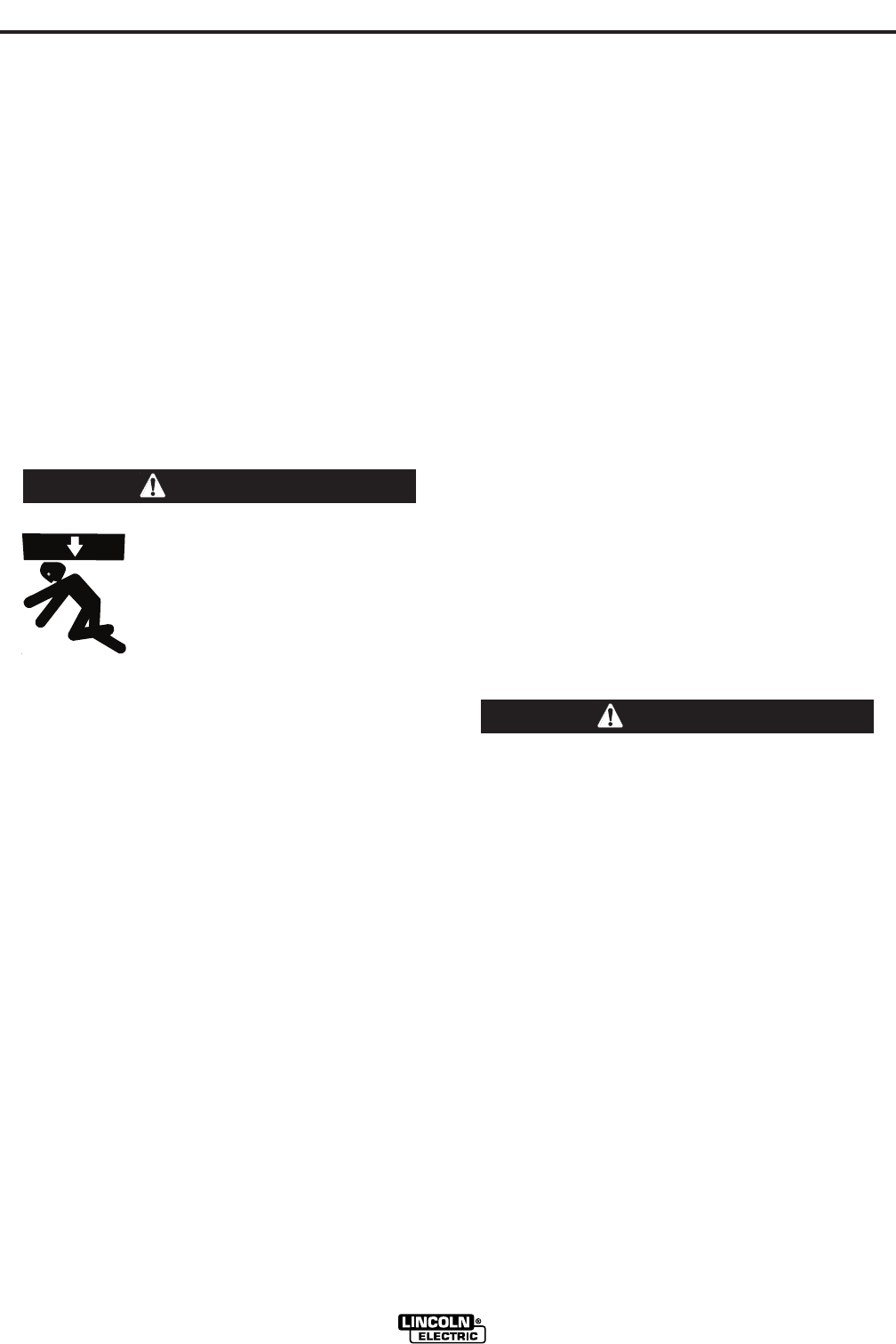
"'( (#"
&*"(P)#(
("
The
AIR VANTAGE® 500 KUBOTA
lift bale should be
used to lift the machine. The Air Vantage 500 is
shipped with the lift bale retracted. Before attempting
to lift the
AIR VANTAGE® 500 KUBOTA
the lift bale must
be secured in a raised position. Secure the lift bale as
follows:
a. Open the engine compartment door.
b. Locate the 2 access holes on the upper middle
region of compartment wall just below the lift
bale.
c. Use the lifting strap to raise the lift bale to the
full upright position. This will align the mount-
ing holes on the lift bale with the access holes.
d. Secure the lift bale with 2 thread forming
screws. The screws are provided in the
shipped loose parts bag.
(()#$&(#"
At higher altitudes, output derating may be necessary.
For maximum rating, derate the welder output 5% for
every 500 meters (1640ft.) above 400 meters (1312
ft.).
Contact a KUBOTA Service Representative for any
engine adjustments that may be required.
(!$&()&#$&(#"
At temperatures above 40°C (104°F), output voltage
derating may be necessary. For maximum output cur-
rent ratings, derate welder voltage rating 2 volts for
every 10°C (21°F) above 40°C (104°F).
O 85C>=;HF8C74@D8?<4=C>5034
@D0C4;85C8=620?028CH
O4BDA4<0278=48BBC01;4F74=;85C
8=6
O>=>C;85CC78B<0278=4DB8=6;85C
108;858C8B4@D8??43F8C70740EH
0224BB>AHBD270BCA08;4A>A60B
2H;8=34A
" O>=>C;85C<0278=485;85C108;8B
%)$!"(20=30<0643
20DB48=9DAHO>=>C>?4A0C4<0278=4F78;4
BDB?4=3435A><;85C108;
--------------------------------------------------------------------------------
(#+"
The recommended trailer for use with this equipment
for road, in-plant and yard towing by a vehicle
(1)
is
Lincoln’s K2641-2. If the user adapts a non-Lincoln
trailer, he must assume responsibility that the method
of attachment and usage does not result in a safety
hazard nor damage the welding equipment. Some of
the factors to be considered are as follows:
1. Design capacity of trailer vs. weight of Lincoln
equipment and likely additional attachments.
2. Proper support of, and attachment to, the base of
the welding equipment so that there will be no
undue stress to the trailer’s framework.
3. Proper placement of the equipment on the trailer
to insure stability side to side and front to back
when being moved and when standing by itself.
4. Typical conditions of use, such as travel speed,
roughness of surface on which the trailer will be
operated, and environmental conditions.
5. Proper preventative maintenance of trailer.
6. Conformance with federal, state and local laws
(1)
.
(1)
Consult applicable federal, state and local laws
regarding specific requirements for use on public
highways.
* !#)"("
<?A>?4A;H<>D=C432>=24=CA0C43;>03B<0H
20DB4D=BC01;4E4782;470=3;8=60=3C8A4B>A>C74A
2><?>=4=CBC>508;
O#=;HCA0=B?>ACC78B@D8?<4=C>=B4AE82401;4
E4782;4BF78270A4A0C430=334B86=435>ABD27
;>03B
O8BCA81DC410;0=240=3B42DA4;>03BB>E4782;4
8BBC01;4D=34A2>=38C8>=B>5DB4
O>=>C4G2443<0G8<D<A0C43;>03B5>A2><?>
=4=CBBD270BBDB?4=B8>=0G;4B0=3C8A4B
O!>D=C4@D8?<4=C10B4C><4C0;143>A5A0<4>5
E4782;4
O>;;>FE4782;4<0=D502CDA4YB8=BCAD2C8>=B
--------------------------------------------------------------------------------
+&""
+&""



